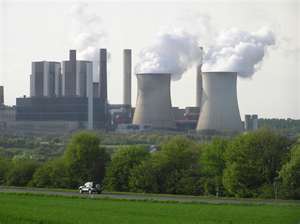A non-partisan campaign to put action on climate change at the centre of the coming election campaign was launched at the weekend (NZ Herald, RNZ). Climate Voter, a joint initiative by Forest & Bird, Generation Zero, 350 Aoteoroa, Greenpeace, Oxfam and WWF, is using social media to drive the campaign, and will host a debate on climate policy between the leaders of the top six polling parties in September. At the time of writing over 10,000 people had signed up to the campaign — including me. It’s a very worthwhile effort and one I’m very happy to support, because as long as politicians are allowed to get away with mismanaging or ignoring climate policy, NZ will remain on the wrong path. The laws of physics don’t care what your politics are, but they will make people who ignore them pay a high price.
Tag: 350
The Climate Show #33: Salinger, carbon carnage and recursive fury
[youtube http://www.youtube.com/watch?v=P_Vzj5PKLGc&w=480]
In this week’s news-packed edition of The Climate Show we have an exclusive interview with Jim Salinger, probably New Zealand’s highest profile climate scientist, talking about extremes and the shape of things to come. John Cook discusses his new paper with Stephan Lewandowsky, Recursive fury: Conspiracist ideation in the blogosphere in response to research on conspiracist ideation, which is already upsetting climate cranks around the world, plus we look at carbon bubbles, renewable energy beating coal on price, and a simply superb iPad app.
Watch The Climate Show on our Youtube channel, subscribe to the podcast via iTunes, listen to us via Stitcher on your smartphone or listen direct/download from the link below the fold.
Follow The Climate Show at The Climate Show web site, and on Facebook and Twitter.
Continue reading “The Climate Show #33: Salinger, carbon carnage and recursive fury”
McKibben: naming the enemy
 “It has become a rogue industry, reckless like no other force on Earth. It is Public Enemy Number One to the survival of our planetary civilization.” These are the words Bill McKibben uses to describe the fossil-fuel industry in a recent striking article in Rolling Stone which has received wide attention. It’s well worth reading, not least for the elegant lucidity of its prose. This post is not intended as some kind of summary, but rather as a reflection on McKibben’s notion that we need to recognise that we are up against a formidable enemy. He moves to this declaration by considering three numbers.
“It has become a rogue industry, reckless like no other force on Earth. It is Public Enemy Number One to the survival of our planetary civilization.” These are the words Bill McKibben uses to describe the fossil-fuel industry in a recent striking article in Rolling Stone which has received wide attention. It’s well worth reading, not least for the elegant lucidity of its prose. This post is not intended as some kind of summary, but rather as a reflection on McKibben’s notion that we need to recognise that we are up against a formidable enemy. He moves to this declaration by considering three numbers.
The first is 2o Celsius, the level of warming which is widely accepted politically as not to be exceeded. Scientifically it can’t be regarded as a safe level of warming, and it’s certainly not so regarded by McKibben, but ”political realism bested scientific data, and the world settled on the two-degree target”.
The second number is 565 gigatons, which is the amount of carbon dioxide scientists estimate can still be added to the atmosphere by mid-century and give us a reasonable (80%) hope of staying below two degrees.
The third number is 2,795 gigatons, which is the amount of carbon already contained in the proven coal and oil and gas reserves of the fossil-fuel companies, and the countries that act like fossil-fuel companies. “In short, it’s the fossil fuel we’re currently planning to burn.” And it’s five times more than we can burn and have any hope of staying within two degrees of warming.
Hansen’s letter on lignite
 At the suggestion of Slovenian colleagues, James Hansen has written to the President and members of the National Assembly of the Republic of Slovenia urging them to deny a state guarantee for a proposed European Investment Bank loan to fund a new lignite-fired power plant in their country.
At the suggestion of Slovenian colleagues, James Hansen has written to the President and members of the National Assembly of the Republic of Slovenia urging them to deny a state guarantee for a proposed European Investment Bank loan to fund a new lignite-fired power plant in their country.
He points out that they are considering a decision which will have significant effects, some irreversible, upon the world that today’s young people and future generations inherit. Such a strong statement, he says, however unlikely it may seem at first glance, is a clear conclusion of the most advanced climate science. That science he proceeds to summarise in his letter, and to describe in more detail in an attached paper The Case for Avoiding Dangerous Climate Change to Protect Young People and Nature.
A fighting chance?
 Bill McKibben has a striking article this week in Yale e360 in which he explains why the protest against the pipeline to carry tar sands oil from Alberta to the US may be the start of “something big and desperate”. The desperate part is easy to understand. Three converging factors contribute to it, political, meteorological and geological.
Bill McKibben has a striking article this week in Yale e360 in which he explains why the protest against the pipeline to carry tar sands oil from Alberta to the US may be the start of “something big and desperate”. The desperate part is easy to understand. Three converging factors contribute to it, political, meteorological and geological.
Politically the US administration has failed to secure carbon legislation, or even to show much resolve to do so, with the result that there isn’t going to be a price on carbon in America, and hence not in most of the world, any time soon. The hope that surrounded Obama’s election in that respect has evaporated.
That hope was perhaps always excessive — but then, the man himself had done all that he could to encourage it. On the night he clinched the nomination he said that during his presidency “the rise of the oceans will begin to slow and the planet begin to heal.” Waiting for a messiah, we managed to convince ourselves we might have found one.
Meanwhile the climate is changing. Continue reading “A fighting chance?”

